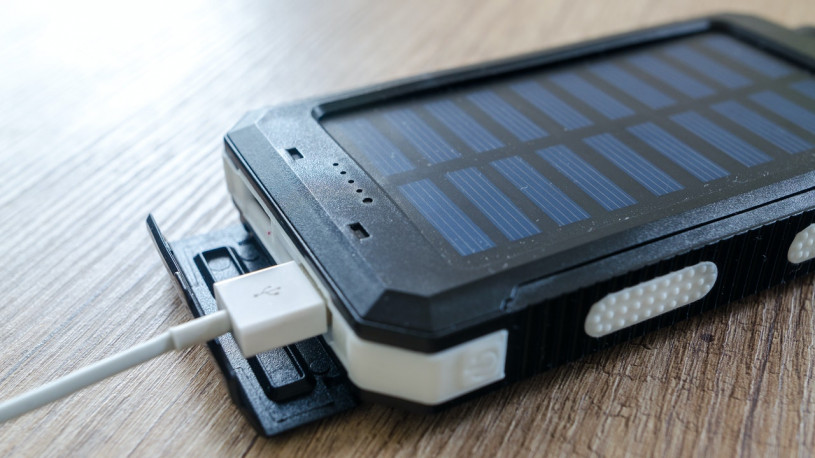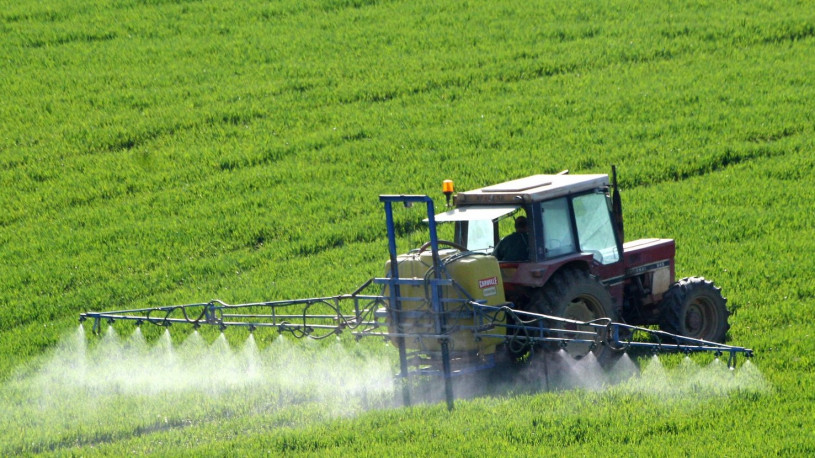-
Does Aluminium + Titanium Dioxide = Better Rechargeable Batteries?
 Continue Reading
Continue ReadingThanks to research conducted at the Massachusetts Institute of Technology and Tsinghua University in China, Lithium-ion batteries are about to be given a major overhaul which it is hoped will improve both their capacity and power.
The current problem, if you’ll pardon the pun, is that the electrodes in rechargeable batteries expand and shrink during each cycle of charging and discharging electricity. The effect of this expansion, which can double the size of an electrode, and then contraction is that it’s ‘skin’ can fall off. This leads to deformation of the lithium over time that lowers the charging capability and performance of the battery.
Now the journal ‘Nature Communications’ has reported a breakthrough in battery construction by professor Ju Li and six others that will transform batteries of the future by using an aluminium ‘yolk’ with a titanium dioxide ‘shell’.
Lithium-ion batteries, the most common form of rechargeable battery, use graphite (carbon based) anodes with a charge storage capacity of 0.35 ampere-hours per gram (Ah/g). Previous experiments have attempted to use other substances with a greater storage capacity, but have been found to have major drawbacks. Lithium metal, for example, can store ten times more power, but may short-circuit equipment or even catch fire. Silicon and tin can also hold a larger charge, but are less effective over time.
Aluminium however, could theoretically hold as much as 2 Ah/g and is also a relatively low cost material. But the disadvantage of aluminium anodes is that at high capacities, when it absorbs lithium, they expand and then when discharging or releasing lithium they shrink. Overtime, this expansion and contraction (on a nano-scale) causes wear on the electrodes and lowers the batteries performance.
The breakthrough has been made by using aluminium in a confined ‘shell’, which limits the damage so that capacity levels can be maintained. As MiT news explains, “In the nanotechnology business, there is a big difference between what are called ‘core-shell‘ and ‘yolk-shell‘ nanoparticles. The former have a shell that is bonded directly to the core, but yolk-shell particles feature a void between the two — equivalent to where the white of an egg would be. As a result, the ‘yolk‘ material can expand and contract freely, with little effect on the dimensions and stability of the ‘shell.‘
As Prof Li of the research team states, “We made a titanium oxide shell that separates the aluminium from the liquid electrolyte [between the battery’s two electrodes]. As the shell does not expand or shrink much, the SEI coating on the shell remains stable and does not fall off, and the aluminium inside is protected from direct contact with the electrolyte.“
The discovery was made by chance, but it still wasn‘t easy to perfect as MiT news explains, “The aluminium particles used are about 50 nanometers in diameter, and naturally have an oxidized layer of alumina (Al2O3). This is not wanted because of its poor electrical conductivity, so the team ended up converting the alumina layer to titania (TiO2), a better conductor of electrons and lithium ions when it is very thin. Aluminium powders were placed in sulphuric acid saturated with titanium oxysulfate. When the alumina reacts with sulphuric acid, excess water is released which reacts with titanium oxysulfate to form a solid shell of titanium hydroxide with a thickness of 3 to 4 nanometers.
These particles are then treated to get the final aluminum-titania (ATO) yolk-shell particles. After being tested through 500 charging-discharging cycles, the titania shell gets a bit thicker, but the inside of the electrode remains clean with no buildup of the SEIs, proving the shell fully encloses the aluminium while allowing lithium ions and electrons to get in and out. The result is an electrode that gives more than three times the capacity of graphite (1.2 Ah/g) at a normal charging rate. At very fast charging rates (six minutes to full charge), the capacity is still 0.66 Ah/g after 500 cycles.
An independent reviewer of the discovery, David Lou, an associate professor of chemical and biomolecular engineering at Nanyang Technological University in Singapore, is amazed at the findings, and confident that the process could have real world applications. He said, “These yolk-shell particles show very impressive performance in lab-scale testing, but to me, the most attractive point of this work is that the process appears simple and scalable.” He continues by admiring the simplicity of the process compared to other developments.
“There is much work in the battery field that uses complicated synthesis with sophisticated facilities, but such systems are unlikely to have impact for real batteries. … Simple things [such as this new discovery] make real impact in the battery field.”
The picture at the top of this page (courtesy of Christine Daniloff of MiT) represents an aluminium nanoparticle ‘yolk’, whilst the light blue represents a TiO2 ‘shell’ that protects the core whilst allowing it to expand and contract. In the background is an actual scanning electron microscope image of a collection of these yolk-shell nanoparticles.
For now the science makes sense, but what impact it will have on the battery industry remains to be seen. It is also uncertain how long before this product can be commercially supplied or what affect it will have on prices of lithium, titanium dioxide and aluminium.
-
Should Growers Focus Less on Fertiliser and More on Limiting Surface Run Off?
 Continue Reading
Continue ReadingResearchers at Kansas State University are changing the way that they study the effects of fertiliser on crop yields, and asking if agrichem companies shouldn’t be doing the same.
For now, the research is still in its infancy, but it has been common knowledge that millions of dollars worth of fertiliser and acres of land is wasted every year by the damage caused by surface run off. The researchers hope that by having a better understanding of what causes this erosion and water flow, land management systems could be improved. As Aleksey Sheshukov, assistant professor of biological and agricultural engineering says, “We are trying to learn about what causes ephemeral gullies [the tracts of land that look like small river beds] and how to prevent them.”
But as Sheshukov admits, the hardest part of the study is the great differences from one field to the next. “We are beginning to assess those practices, but because of the differences in geography and soil and other factors, we haven’t developed complete strategies yet.”
Work is progressing however, as the study analyses water movement and its affect on soil particles. Various methods of restricting water flow, such as making the sides of the gully less steep, double-cropping in the gully, or creating artificial swales have so far been tested. Computer models are then constructed to see which reduce sediment loads the most and which practises are more effective.
But there is still much work to be done, as Sheshukov explains, “Overall, there has been a lot more exposure recently to this problem, so I think we are gaining a better understanding of the issue. I hope in a few years we will be able to predict with more certainty the reduction rates for a given practice.”
Perhaps most surprising of all, is with so many farmers losing fertiliser from surface run off and losing money from lost growing space, why isn’t more research being done to solve the problem?
-
Why Aren’t We All Growing ‘Carbon-Neutral’?
 Continue Reading
Continue ReadingBack in April 2012, a Canadian company began farming what it called ‘the most carbon-neutral peppers in North America’, by using a clever CO² capture system. The company, SunSelect, is still a successful grower of produce, but after three years of low carbon impact growing, should we be surprised that this idea has not taken off?
The technology behind the method is clever.
At the beginning of the process, waste wood and sawdust from a nearby sawmill are burnt to heat the 40-Acre greenhouse where the peppers are grown. However, the gases released from the burning are cooled in a flue, so that the carbon dioxide can be stripped off via a water-based organic solvent. The CO² is then stored in a buffer tank ready to be applied directly to the plants.
As Victor Krahn, co-founder of ProSelect Gas Treating Inc. that developed the technology said in a press release at the time, “Carbon-free excess vapor is harmlessly emitted into the atmosphere. Meanwhile, the resulting pure carbon dioxide-laden solvent is boiled off to release food-grade CO² gas at the demand of the greenhouse, cooled and administered directly to the plants in a seamless, computer-controlled and monitored process.”
Whilst the grower (SunSelect) remains keen to promote their sustainable initiative, it is both interesting and a little disappointing that consumers are not more eager to buy carbon-neutral food. Aaron Quon, one of the directors at parent company Oppenheimer, believes that the process “can serve as a powerful point of differentiation” from other growers. Meanwhile the SunSelect website proudly promotes the system, by stating that, “This process only releases the same amount of CO² into the air that would have been released when the plant decomposed naturally.”
But the question remains, why haven’t more growers adopted such an advantageous system?
